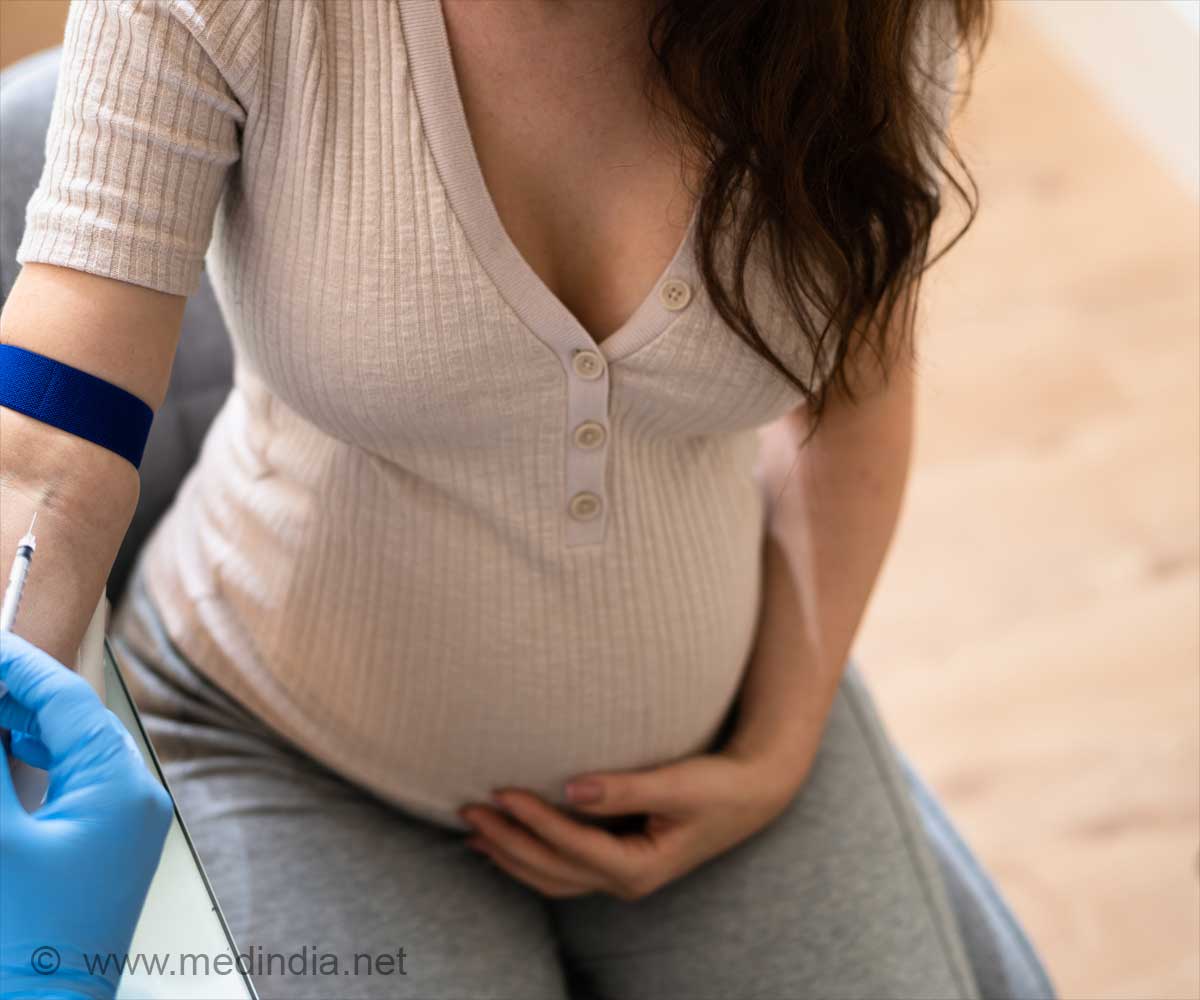
-
cfDNA is a non-invasive method for detecting fetal aneuploidies during pregnancy - cfDNA-based Noninvasive Prenatal Testing has an accuracy rate of over 99% for detecting trisomy 21
- cfDNA can be detected in maternal blood as early as 7 weeks gestation
Cell-free DNA (cfDNA) refers to small fragments of DNA that are present in the bloodstream of pregnant women through a natural process of cell death. These fragments originate from the placenta and are shed into the maternal circulation during pregnancy.
During pregnancy, the mother’s blood contains cfDNA from both her own tissue and the fetus via the placenta. Approximately 2.4% to 24.4% of total cfDNA in maternal blood is placental (1✔ ✔Trusted Source
Noninvasive prenatal test for fetal chromosomal aneuploidies by massively parallel sequencing of cell-free fetal DNA in maternal plasma: The first clinical experience in Korea
), which can be detected after 7+ weeks gestation and is undetectable within two hours postpartum (2✔ ✔Trusted Source
Cell-Free DNA Screening: Complexities and Challenges of Clinical Implementation
).
Advertisement
Characteristics of Cell-free DNA
cfDNA has several characteristics that make it an ideal target for non-invasive prenatal testing (NIPT). Non-Invasive Prenatal Testing (NIPT) is a prenatal screening that analyzes a pregnant woman’s blood to detect potential genetic abnormalities in the fetus. This allows for early detection of fetal aneuploidies and minimizes the risk of false positives. Additionally, cfDNA is highly fragmented, with a median size of around 160-170 base pairs, making it easily distinguishable from maternal DNA.
Advertisement
Impact of Cell-free DNA on Fetal Aneuploidy Detection
The discovery of cfDNA has had a significant impact on fetal aneuploidy detection. Fetal aneuploidy refers to a condition where a fetus has an abnormal number of chromosomes in its cells. Typically, a human being has 46 chromosomes in each cell, arranged into 23 pairs. However, in cases of aneuploidy, there is either an extra chromosome (trisomy) or a missing chromosome (monosomy).
NIPT using cfDNA has been shown to be highly accurate, with detection rates of over 99% for trisomy 21 (3✔ ✔Trusted Source
Cell-Free Dna Screening For Fetal Aneuploidy
Go to source). This is significantly higher than traditional screening methods, which have detection rates of around 80-90%. Additionally, NIPT using cfDNA has been shown to reduce the number of invasive procedures, such as amniocentesis, by up to 70% (4✔ ✔Trusted Source
Association between cell-free DNA fetal fraction and pregnant character: a retrospective cohort study of 27,793 maternal plasmas
Advertisement
Role of cfDNA in Noninvasive Prenatal Testing (NIPT)
The role of cfDNA in NIPT is crucial for the detection of fetal aneuploidies. Some key aspects of the role of cfDNA in NIPT:
Detection of Fetal Aneuploidies: cfDNA is used to detect fetal aneuploidies, such as Down syndrome (trisomy 21), Edwards syndrome (trisomy 18), and Patau syndrome (trisomy 13).
Non-Invasive Nature: One of the significant advantages of cfDNA-based NIPT is its non-invasive nature, which does not carry any risk to the fetus or the mother (5✔ ✔Trusted Source
Prenatal Cell-Free DNA Screening
High Accuracy: cfDNA-based NIPT has been shown to have high accuracy rates, with detection rates of over 99% for trisomy 21.
Early Detection: cfDNA can be detected in maternal blood as early as 7 weeks gestation, allowing for early detection of fetal aneuploidies.
Screening for Other Conditions: In addition to detecting fetal aneuploidies, cfDNA-based NIPT can also screen for other conditions, such as Rh blood type and sex chromosome abnormalities.
Fetal Fraction and its Impact on Noninvasive Prenatal Testing
The percentage of total cell-free DNA (cfDNA) in a sample derived from the fetus is called the fetal fraction. This can affect the ability of NIPT to detect fetal aneuploidy. When considering various cfDNA NIPT technologies, it’s essential to understand how fetal fraction is used and how it can affect test results (6✔ ✔Trusted Source
Understanding cfDNA and its impact on fetal aneuploidy detection
).
Fetal Fraction and Test Failure: Traditional microarray- and targeted sequencing-based NIPT technologies often rely on a strict fetal fraction cutoff. If the fetal fraction falls below this threshold, the test may be considered a failure and no result is reported. This can lead to higher test failure rates, even after redrawing the sample.
Dynamic Thresholds: Whole-genome sequencing-based NIPT technology offers a more flexible approach which is dynamic thresholds. This method allows samples with lower fetal fraction to be analyzed and reported, provided there is sufficient sequencing data to ensure accurate results.By allowing analysis of samples with lower fetal fraction, dynamic thresholds can significantly reduce test failure rates.
The Illumina VeriSeq NIPT Solution incorporates a dynamic threshold testing metric called iFACT. This technology helps to optimize test performance and minimize false negative results, even in cases of low fetal fraction.
Limitations of cfDNA-based Noninvasive Prenatal Testing
While cfDNA-based NIPT is highly accurate, it is not 100% accurate. There is a small chance of false positive or false negative results. Additionally, cfDNA-based NIPT may not detect all types of chromosomal abnormalities (7✔ ✔Trusted Source
Implementation of cell-free DNA-based non-invasive prenatal testing in a National Health Service Regional Genetics Laboratory
).
Additional Considerations
Multiple pregnancies: cfDNA-based NIPT may not be as accurate in multiple pregnancies, such as twins or triplets.
Mosaicism: cfDNA-based NIPT may not detect mosaicism, a condition where a mixture of normal and abnormal cells are present in the placenta.
Vanishing twin syndrome: cfDNA-based NIPT may not detect vanishing twin syndrome, a condition where one twin disappears during pregnancy.
Cancer detection: cfDNA-based NIPT may also detect cancer in the mother, as seen in some cases where the test results indicated an abnormal number of chromosomes, but the fetus was normal, and the mother was later diagnosed with cancer.
References:
- Noninvasive prenatal test for fetal chromosomal aneuploidies by massively parallel sequencing of cell-free fetal DNA in maternal plasma: The first clinical experience in Korea – (https://www.e-kjgm.org/journal/view.html?doi=10.5734/JGM.2015.12.2.85)
- Cell-Free DNA Screening: Complexities and Challenges of Clinical Implementation – (https://www.ncbi.nlm.nih.gov/pmc/articles/PMC5548289/)
- Cell-Free Dna Screening For Fetal Aneuploidy – (https://journals.lww.com/greenjournal/fulltext/2015/09000/committee_opinion_no__640__cell_free_dna_screening.51.aspx)
- Association between cell-free DNA fetal fraction and pregnant character: a retrospective cohort study of 27,793 maternal plasmas – (https://www.nature.com/articles/s41598-023-38151-4)
- Prenatal Cell-Free DNA Screening – (https://medlineplus.gov/lab-tests/prenatal-cell-free-dna-screening/)
- Understanding cfDNA and its impact on fetal aneuploidy detection – (https://sapac.illumina.com/clinical/reproductive-genetic-health/nipt/labs/cell-free-dna-fetal-fraction.html)
- Implementation of cell-free DNA-based non-invasive prenatal testing in a National Health Service Regional Genetics Laboratory – (https://www.ncbi.nlm.nih.gov/pmc/articles/PMC7044975/)
Source-Medindia



